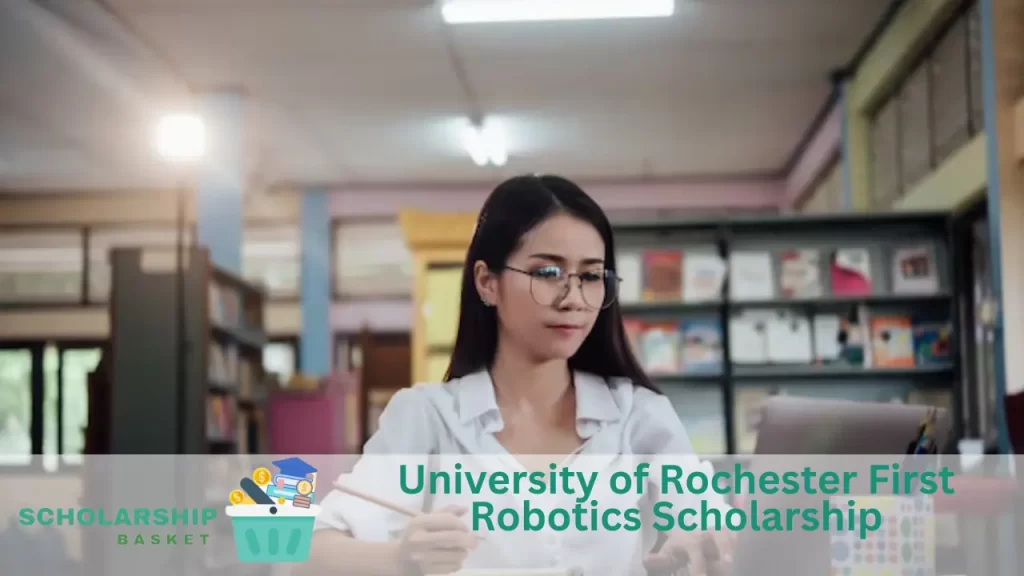I remember the exact moment the dream of building robots first truly grabbed me. It wasn’t a sleek, silver humanoid from a movie; it was a clunky, homemade contraption my older cousin built in his garage. It moved with a whirring groan, held together by duct tape and sheer will, but to my young eyes, it was magic. From that day on, my path seemed clear: I wanted to be a roboticist. I wanted to design, build, and innovate. But as I got older, the practicalities of that dream started to loom large, particularly the cost. Robotics education, with its specialized equipment, advanced degrees, and demanding research, isn’t cheap. For a long time, the financial hurdle felt like an insurmountable wall, threatening to keep my hands tied, my ideas trapped in my head.
I watched countless documentaries, devoured books, and spent hours tinkering with circuit boards and discarded electronics. The passion burned brighter with every discovery, but so did the anxiety about how I would ever afford university, let alone a master’s or Ph.D. in such a cutting-edge field. My family was supportive, but our resources were limited. The idea of taking on a mountain of student debt before I even started my career was terrifying. I genuinely started to wonder if my robotics dream was just that – a dream, too expensive to ever become real.
Then, almost by accident, I stumbled upon a forum post about "robotics scholarships." It was a tiny glimmer of hope in what felt like a very dark tunnel. Scholarships? For robotics? It sounded too good to be true. But that single phrase changed everything. It gave me a direction, a new goal beyond just getting into a program: finding the money to actually pay for it. That’s when my real journey began, not just into the world of robotics, but into the often-overlooked world of financial aid designed specifically for folks like me.
My first step was to simply search. I typed "robotics scholarships" into every search engine I could find. What came back was a mixture of general STEM scholarships, engineering scholarships, and a surprising number of awards specifically for robotics. It was overwhelming at first. So many options, so many deadlines, so many requirements. I quickly realized that this wasn’t going to be a quick process. It required dedication, organization, and a healthy dose of persistence.
One of the first things I learned was that not all scholarships are created equal, and they certainly don’t all look for the same things. There are scholarships based purely on academic merit – if you’ve got top grades, especially in math and science, you’re in a good position. I worked incredibly hard to keep my grades up, knowing that every A in calculus or physics was a step closer to funding. Then there are need-based scholarships, which consider your family’s financial situation. These were particularly important for me, as they addressed the core issue of affordability.
Beyond those two main categories, I started uncovering a fascinating array of specialized awards. There are scholarships for women in engineering, recognizing the importance of diverse perspectives in a field historically dominated by men. There are programs for minority students, aiming to increase representation in STEM. Some scholarships are regional, offered by local companies or foundations looking to support talent in their area. Others are tied to specific universities or research interests, like artificial intelligence, robotic surgery, or autonomous vehicles. I even found some that focused on community involvement or leadership potential, proving that being a well-rounded individual matters just as much as your technical prowess.
The sheer variety meant that I couldn’t just apply to one or two and hope for the best. I had to cast a wide net. My strategy became about identifying as many scholarships as possible that aligned with some part of my profile – my grades, my financial need, my gender, my passion for a particular type of robotics. I created a spreadsheet, meticulously listing each scholarship, its requirements, deadlines, and a brief note about why I thought I might be a good fit. This spreadsheet became my lifeline, a constantly updated map guiding me through the scholarship landscape.
The application process itself was a marathon, not a sprint. Every scholarship seemed to demand a slightly different set of documents. Transcripts were a given, of course, showing my academic journey. Letters of recommendation were also critical. I learned early on that asking for these shouldn’t be a last-minute scramble. I approached teachers and mentors who knew me well, who had seen my dedication and understood my goals. I gave them plenty of notice, provided them with my resume, and reminded them of specific projects or achievements we had worked on together. Their words, I knew, would carry weight, painting a picture of me that went beyond grades.
But perhaps the most challenging, and ultimately most rewarding, part of the application was the personal statement or essay. This wasn’t just about regurgitating my resume; it was about telling my story. Why robotics? What made me passionate? What specific problem did I want to solve, or what kind of future did I envision with robots? This was where I had to really dig deep and articulate my unique perspective. I remember one essay prompt that asked about a failure and what I learned from it. I wrote about a robot arm I tried to build that spectacularly failed to move, and how that failure taught me more about troubleshooting, iteration, and perseverance than any success ever could have. I poured my heart into these essays, making sure my voice, my genuine excitement, and my specific experiences shone through. I wanted them to know me, not just my test scores.
I quickly picked up some crucial tips that I now share with anyone looking for similar funding. First, start early. Deadlines creep up faster than you think, especially when you’re balancing schoolwork and extracurriculars. Give yourself ample time to research, gather documents, write essays, and get those recommendations. Second, tailor every application. Copy-pasting a generic essay is a recipe for rejection. Read the scholarship’s mission statement, understand what they value, and then craft your essay and choose your achievements to reflect that. If they care about community service, highlight your volunteer work. If they focus on innovation, talk about your unique project ideas.
Third, proofread, proofread, proofread. A silly typo or grammatical error can make you seem careless, even if you’re a brilliant engineer. I had friends, family, and even a trusted English teacher read my essays and applications. A fresh pair of eyes can catch things you’ve overlooked a dozen times. Fourth, don’t be afraid to ask for help. My school’s guidance counselor was an invaluable resource, pointing me towards specific scholarship databases and offering advice on essay structure. Mentors in the field, even those I’d only connected with online, sometimes knew about niche opportunities.
And finally, and perhaps most importantly, don’t get discouraged by rejections. I received far more "no"s than "yes"s. Each rejection stung, but I learned to see them not as a personal failing, but as a numbers game. Every application was a chance, and if one didn’t pan out, there was always another to try for. The key was to keep trying, keep refining my approach, and keep believing in my dream.
My persistence eventually paid off. I remember the email arriving, not in a fancy embossed letter, but a simple message in my inbox. I had been awarded a significant scholarship from a national engineering foundation, specifically for students pursuing careers in robotics and automation. I reread it about ten times, convinced it was a mistake. But it wasn’t. The relief that washed over me was immense. It wasn’t just the money; it was the validation. Someone believed in my potential, enough to invest in my future.
That scholarship changed everything for me. It meant I could choose my university based on the strength of its robotics program, not just its tuition cost. It allowed me to focus wholeheartedly on my studies and my projects, rather than needing to work multiple part-time jobs to cover expenses. I could afford specialized textbooks, attend workshops, and even buy components for my personal robotics experiments. It opened doors to networking events and conferences that would have been financially out of reach before. I got to meet leading figures in the field, see groundbreaking research firsthand, and connect with other aspiring roboticists who shared my passion. These experiences, invaluable in themselves, further solidified my commitment to the field.
Looking back, the journey to secure that funding was almost as educational as my formal studies. It taught me about self-advocacy, about the importance of telling my story, and about the power of perseverance. It showed me that the robotics community isn’t just about algorithms and circuits; it’s also about supporting the next generation of innovators. Many of these scholarships are funded by individuals, companies, and organizations who genuinely want to see the field advance and understand that talent shouldn’t be limited by economic circumstances.
For anyone out there, like I was, staring at the daunting cost of a robotics education, please know this: your dream is absolutely within reach. The funding is out there, waiting for you to find it. It might not be easy, and it will require effort, but the rewards are immeasurable. Start your search early, be meticulous in your applications, let your passion shine through in your essays, and never give up. Look beyond the obvious; explore smaller, local scholarships as well as the big national ones. Connect with mentors, ask your teachers for help, and utilize every resource available to you.
The world of robotics is expanding at an incredible pace, solving complex problems and shaping our future in ways we can only begin to imagine. From medical robots assisting in surgeries to autonomous systems exploring distant planets, the opportunities are endless. And the need for bright, dedicated minds to drive this innovation is greater than ever. Don’t let the cost be the barrier that keeps you from contributing to this exciting future. With a bit of research, a lot of hard work, and unwavering belief in yourself, you can secure the financial support you need to turn your robotics dream into a tangible, impactful reality. My journey is just one example, and I promise, yours can be too.



